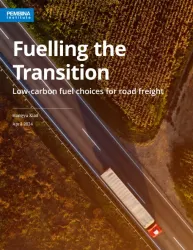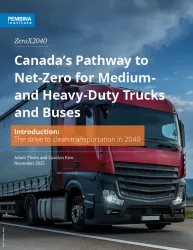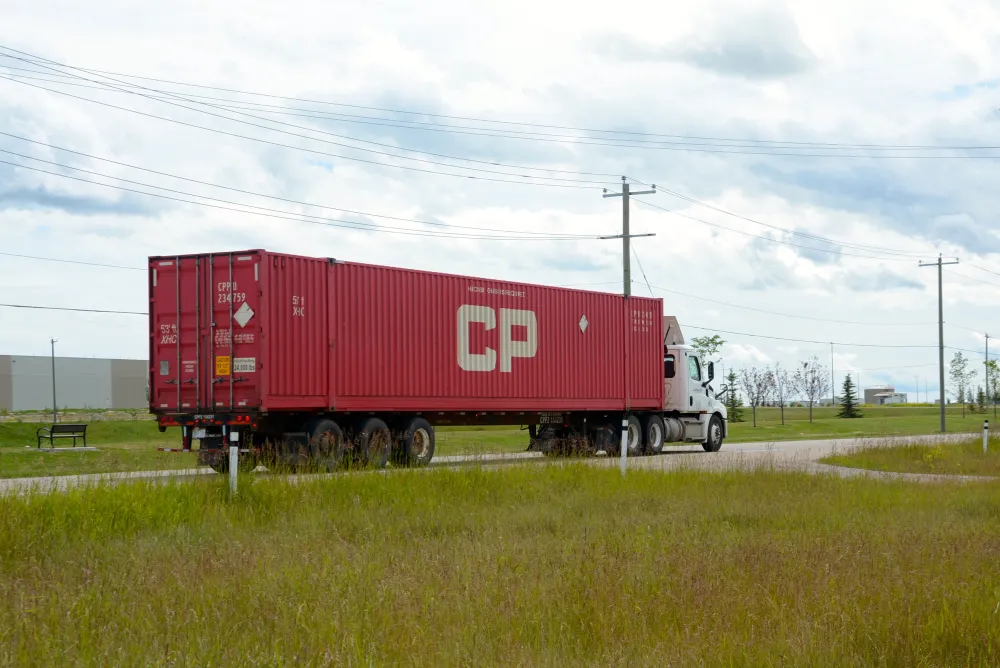This is a historic moment for the automotive industry. Arguably, the biggest transformation in a century is now underway as we bid farewell to the combustion engine era in all vehicle classes.
The federal government is soliciting input into upcoming regulations that will support the transition to zero-emission commercial road freight, resulting in the phaseout of gas- and diesel-fueled fleets.
The role of low-carbon fuels — biodiesel, renewable diesel and renewable natural gas — in decarbonizing delivery fleets will be an important discussion point during the consultations.
Stakeholders in the fuel and transportation industries generally agree that no single fuel or technology will entirely replace diesel in buses and trucks. Instead, owners and operators envision a “poly-fuel” future where different fuels are used in different vehicles and for different purposes.
There are benefits to deploying low-carbon fuels in the medium- and heavy-duty vehicle (MHDV) sector as a means of driving down lifecycle emissions. But filling the tank with an alternative fuel (apart from hydrogen) does not eliminate tailpipe emissions, nor do these fuels lead to fully decarbonized road freight.
For vans, most mid-size and some regional-haul trucks, electrification is the pathway to substantial emission reductions. While that transition takes place, biofuels can and should be an interim solution, primarily in internal combustion vehicles until those are replaced with electric models.
For long- and regional-haul vehicles that transport heavy loads over long distances, either hydrogen or battery-electric versions will likely emerge as market-ready options with a minority of heavy-duty trucks running on natural gas.
When the federal government releases the regulations that will guide Canada to a sustainable road transportation system, decision-makers need to be clear-eyed in recognizing where electrification would be the most cost-effective and impactful means of decarbonization in the MHDV sector.
They should therefore encourage the deployment of cleaner, low-carbon fuels only where necessary.
Low-carbon fuels are advantageous only in specific cases and for a limited duration. To provide context, switching from internal combustion to battery-electric is less straightforward in the bigger vehicle classes than it is for passenger cars. As well, electrification will not be viable for every kind of truck.
Even among the majority of trucks and buses that are electrifiable, there will be 20-25 years during which conventional fleets remain on the road as internal combustion engine vehicles gradually reach their natural end cycle.
During this time, low-carbon fuels — also described as “alternative” or “clean” fuels because they are less carbon-intensive than gas or diesel — can play an important role in reducing the size of a fleet’s carbon footprint.
Federal government taking action
The federal government recently announced its clean fuel regulations, which mandate that fossil fuel suppliers gradually reduce by 2030 the carbon intensity of gas and diesel by 15 per cent relative to 2016 levels.
At the same time, the federal government launched a series of investments and initiatives to accelerate and incentivize the development of the clean fuel sector, including funneling $1.5 billion into the clean fuels fund to advance the production and adoption of low-carbon fuels such as hydrogen and biofuels.
These measures have spurred investments in cleaner fuels across Canada, opening up new channels of economic growth and job creation.

But while alternative fuels can diminish the environmental impact of fleets, analysis shows the greenhouse gas advantage over gas and diesel is handicapped in each instance by supply limitations, operational hiccups and insufficient manufacturing capacity.
In its 2030 emissions reduction plan, the federal government announced that automakers and importers of commercial freight will be required to sell zero- or near-zero-emission vehicles as an increasing percentage of total sales until 100 per cent of sales by 2040 are zero-emission models (ZEVs), where feasible. Only two kinds of vehicles qualify as emission-free: battery-electric and hydrogen-fueled.
More needs to be done

At the Pembina Institute, our modelling shows Canada’s price on carbon in tandem with the clean fuel regulations would also promote sales of emission-free vehicles, without the government sales mandate.
But under these policies alone, ZEV sales won’t come close to the emission-reduction targets or the goal of getting to carbon-neutral by 2050.
Rather, zero-emission models would account for approximately 30 to 60 per cent of new medium-size electric vehicle sales and 10 to 50 per cent of new heavy-duty sales by 2050 — well short of the outcomes needed to transition to clean and sustainable transportation.
Anticipating a requirement to increase sales of non-emitting trucks and buses, automakers have been ramping up production. More than 150 zero-emission models in the MHDV categories are now commercially available in Canada and options are becoming more diverse.
Market forces may well precipitate a demand decline for cleaner fuels as internal combustion vehicles are taken off the road.
As for the climate impact, alternative fuels produce incremental reductions in greenhouse gases (GHGs) whereas when vehicles are electrified at scale, GHGs plummet.
Should the federal government’s 100-per-cent EV sales target be met in full and on time, carbon emissions from road freight would drop from 35 megatonnes (Mt) in 2020 to 10 Mt or less by mid-century — an 80-per-cent nosedive relative to 2020 levels.
The transportation transition must occur at an unprecedented speed if Canada is to lower its carbon levels in this decade quickly enough to meet the goal of net-zero GHGs by 2050.
Given the timelines, effective climate action should include a judicious use of low-carbon fuels. Nearly 70 per cent of medium-duty vehicles and 95 per cent of heavy-duty vehicles will still run on internal combustion engines in 2030, even with a sales mandate in place. Biofuels and other alternative fuels can lower the carbon intensity of those conventional fleets still on the road.
In addition, cleaner fuels will enable at least partial decarbonization in applications where electrification is not yet possible. For last-mile delivery trucks, vans and regional-haul vehicles that travel relatively short distances and return to central distribution centres, however, switching to battery-electric is optimal.
Canada cannot afford to take a wrong turn. We don’t have the luxury of slowing down. On the contrary, Canada should accelerate toward an emission-free future.







